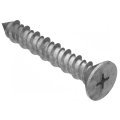Anchors
Anchors: Secure Your Structures with Confidence
Anchors are essential components in construction and fastening applications, providing stability and strength to various structures. Concrete anchors and hollow wall anchors are two common types and are each designed for unique application needs. Concrete anchors connect objects to concrete, masonry, or similar material surfaces, while hollow wall anchors create an attachment point for objects in thin wall materials like drywall or plasterboard.
Concrete anchors are either inserted into wet concrete or into a predrilled hole in dry concrete (or other masonry-like surfaces). Huyett offers anchors for both installation types; those designed for dry concrete applications are forced to expand and lodge into place, while those designed for wet concrete are secured into the concrete as it dries. Both styles provide a reliable attachment point for a wide range of mating components. Huyett’s current selection includes wedge anchors, J bolts, and L bolts.
Hollow wall anchors are specifically designed for wall installations where traditional screws or nails may not provide sufficient support. These anchors expand behind the surface wall material and create a secure hold, even in materials with limited thickness or strength. Common types of hollow wall anchors include expansion anchors, which refers to a variety of both metal and plastic anchor styles.
- Secure Attachment: Both concrete anchors and hollow wall anchors provide secure attachment points for mating components.
- Easy Installation: Designed for straightforward installation, these anchors streamline the fastening process with simple tools and minimal effort.
- Wide Range of Applications: From construction and renovation projects to industrial installations, concrete anchors and hollow wall anchors are suitable for diverse applications.
Installation Tools for Concrete Anchors and Hollow Wall Expansion Anchors
Installation requirements may vary depending on the anchor type and application. However, basic tools such as a drill, hammer, and screwdriver are typically sufficient for most installations with hollow wall expansion anchors. Concrete anchors often require a hammer drill with a masonry drill bit and a setting tool. Always refer to manufacturer instructions for specific installation guidelines.


